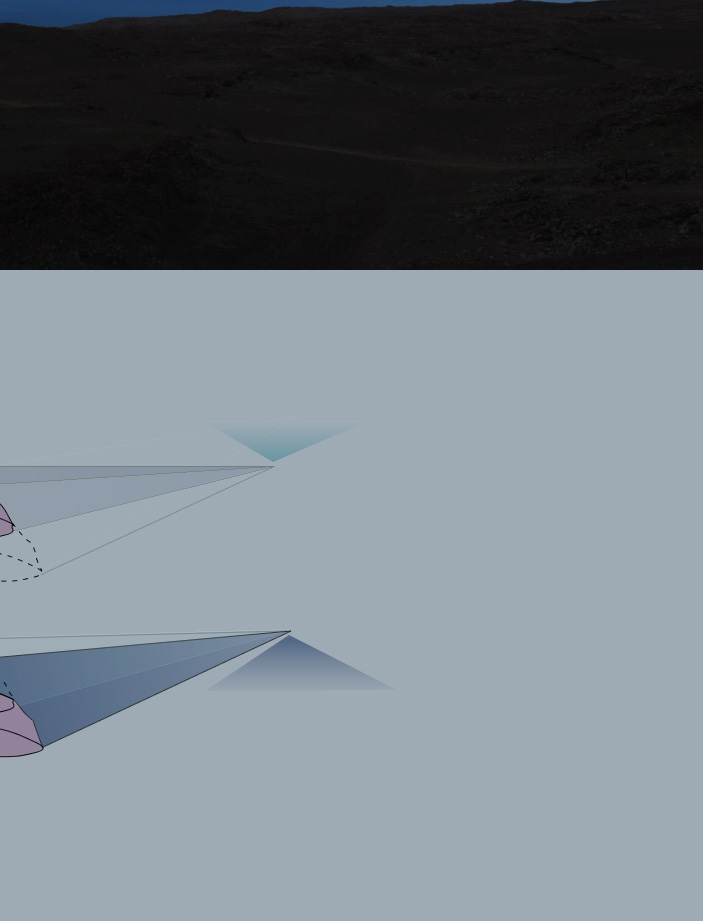 |
 |
 |
|
|
|
 |
||
|
|
|||
| Inverted Mountain Shadow Shadows cast at dawn by Mauna Kea, Hawaii. Taken on July 20, 2010 by Andrew Cooper of Keck Observatory. ©Andrew Cooper, shown with permission A �conventional� dark blue triangular shadow with its point upwards extends from the mountain and envelops the smaller 2400m volcano, Hualalai. In the sky is another inverted triangle. �This appears only when the observer is well below the actual summit, I saw it while driving down from the summit at dawn, thus the shadow is both projected into the haze below, and seen cutting through a layer of haze and thin cloud above. I was located about 200m below the summit.� |
 |
 |
 |
|
|
|
 |
||
|
|
|||

| About - Submit | Optics Picture of the Day | Galleries | Previous | Next | Today |
| There are several ways to visualize what is happening. The key point is that Andrew was not at the summit. Imagine Mauna Kea sliced into two at the level where he was standing. Now take away the upper slice to leave only the lower one 'A'. All mountain shadows appear to be triangular regardless of their profile because perspective makes the long almost parallel shadow tube recede to a point just as parallel railway tracks do. In the diagram the shadow is shown greatly foreshortened to get it on the page, in reality is very long and only slightly tapering. If all mountain shadows are triangular, that of the lower Mauna kea slice 'A' will also be triangular as shown. Now image there is only the upper slice 'B'. The situation is the same except to the observer the mountain is upside-down. It casts an upside down triangular shadow into the sky. Another way of picturing the event is to imagine that the upper slice of Mauna kea is a cloud casting a shadow. It will form an anticrepuscular ray/shadow converging at the antisolar point. An additional twist is that the two shadows in the image are skewed. The geometry tells us that Andrew was standing to the right of the mountain centre as shown. When rather closer to the summit, the upper shadow can appear as a short spike. |